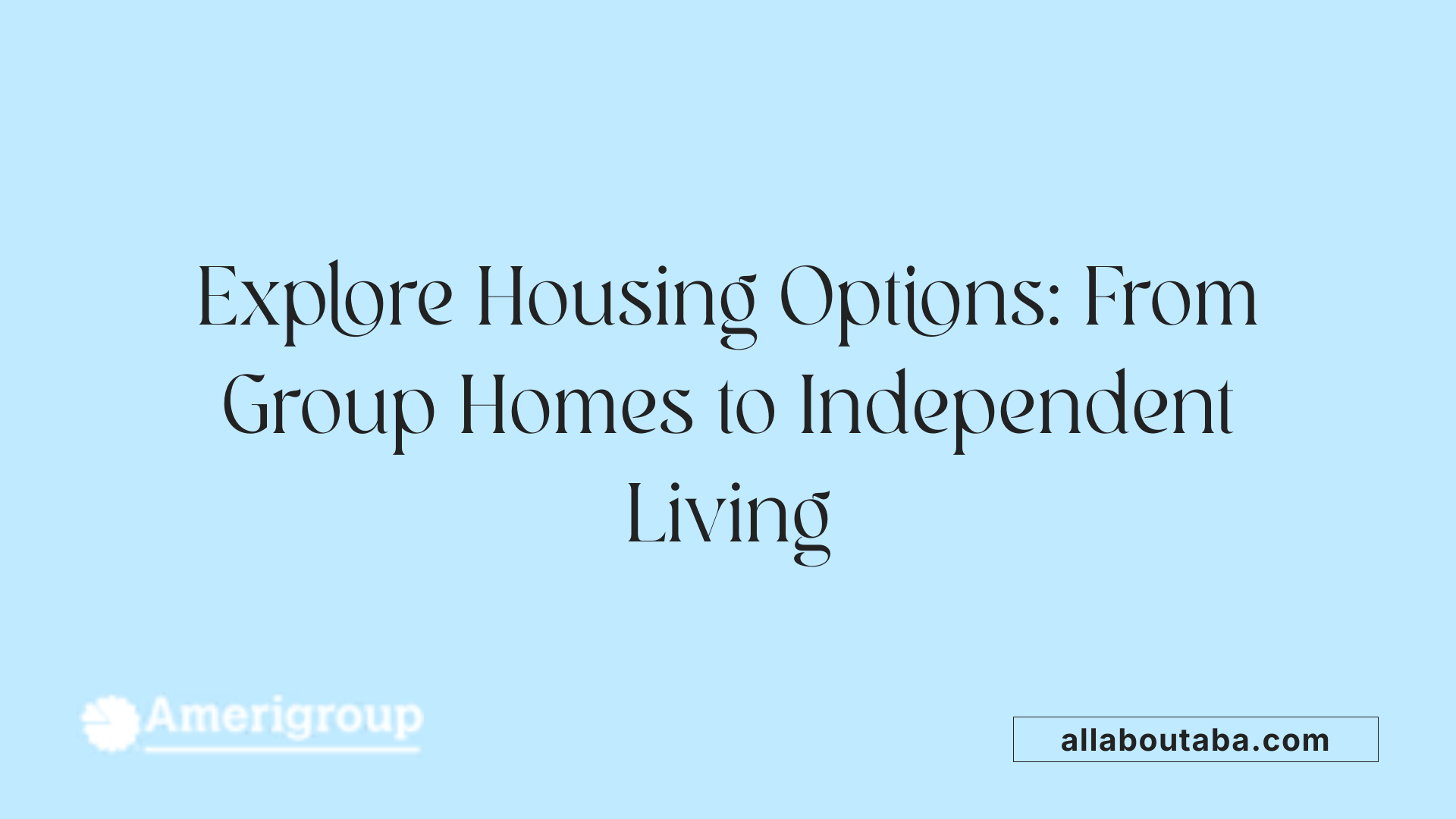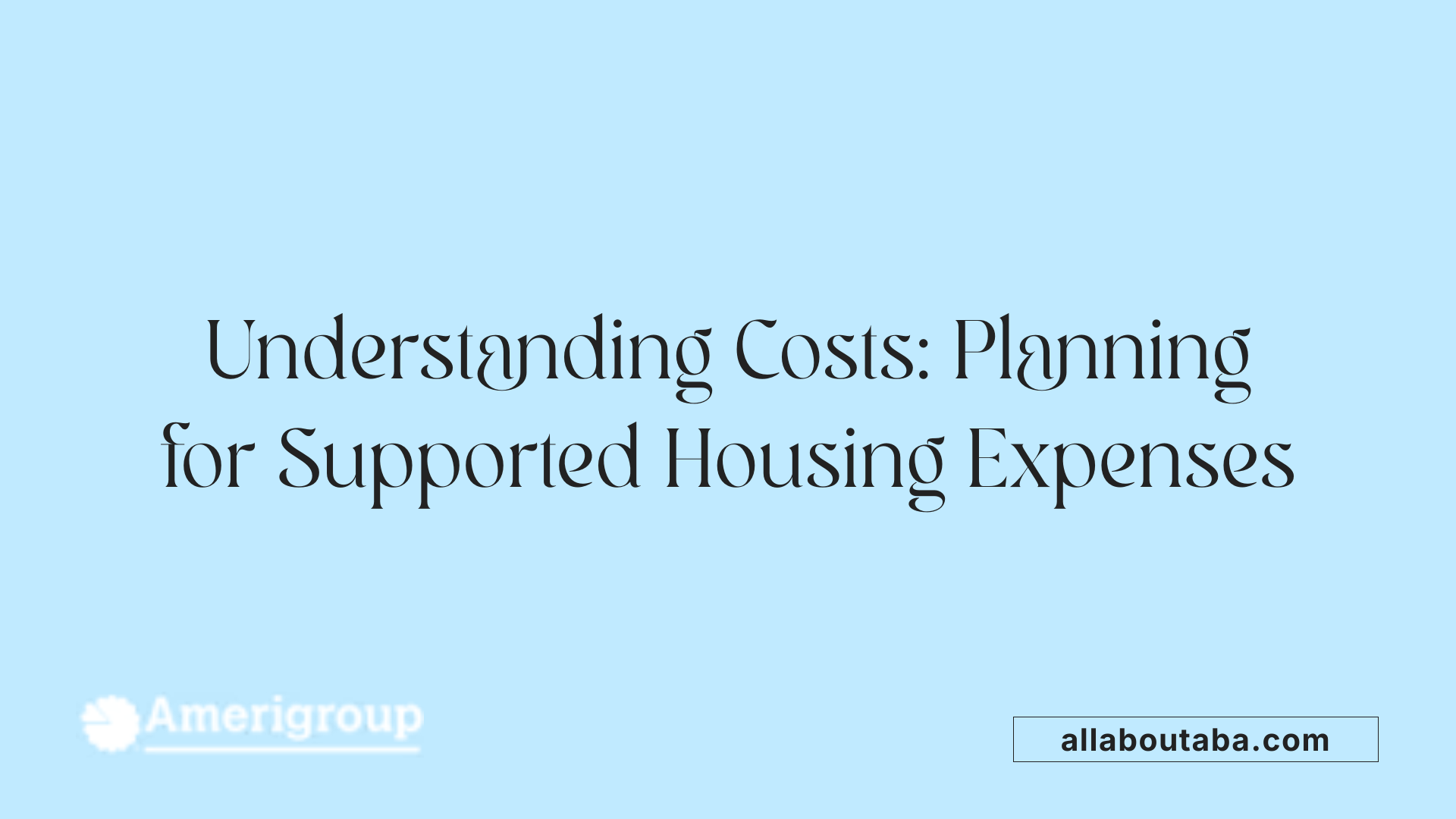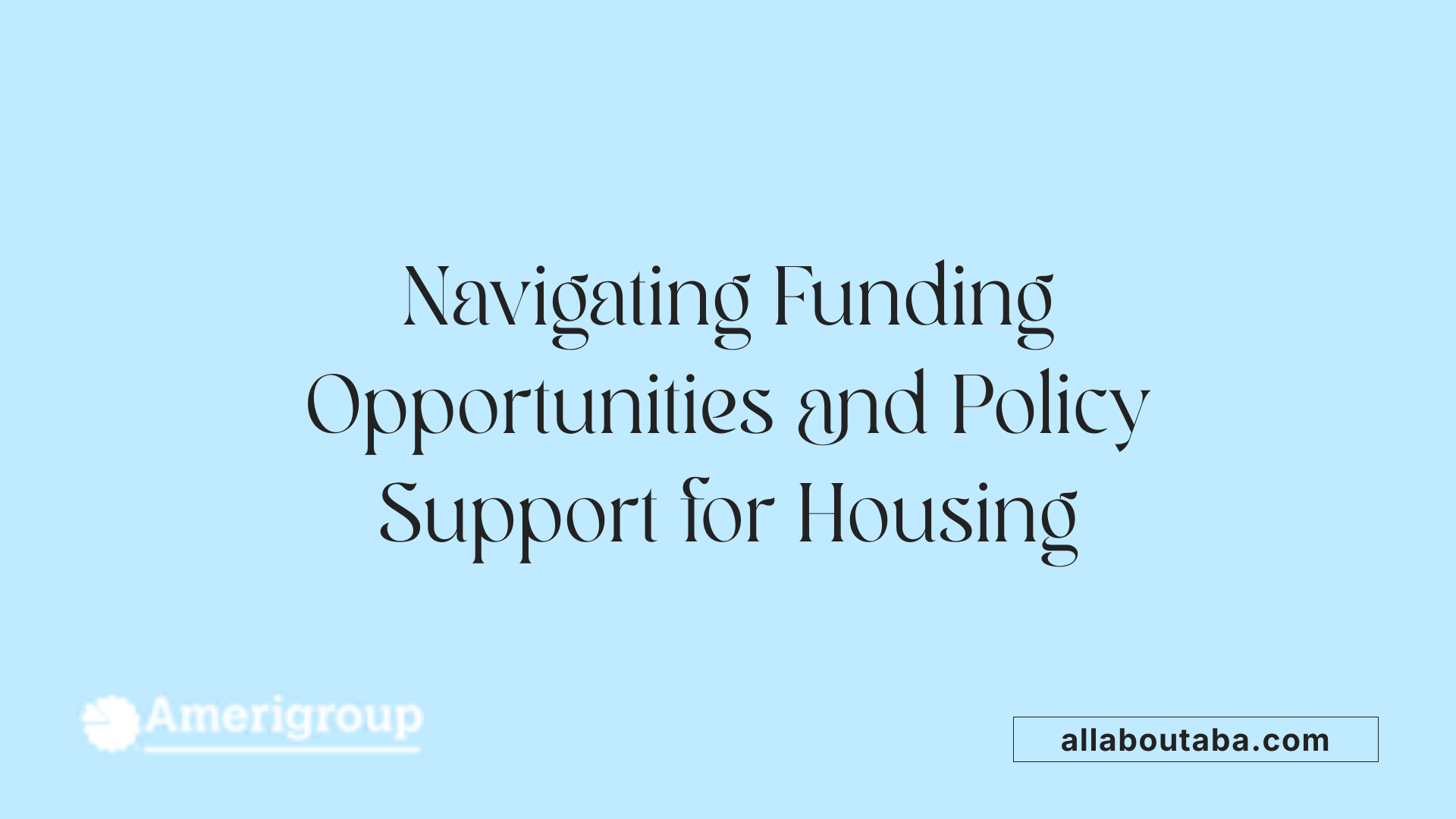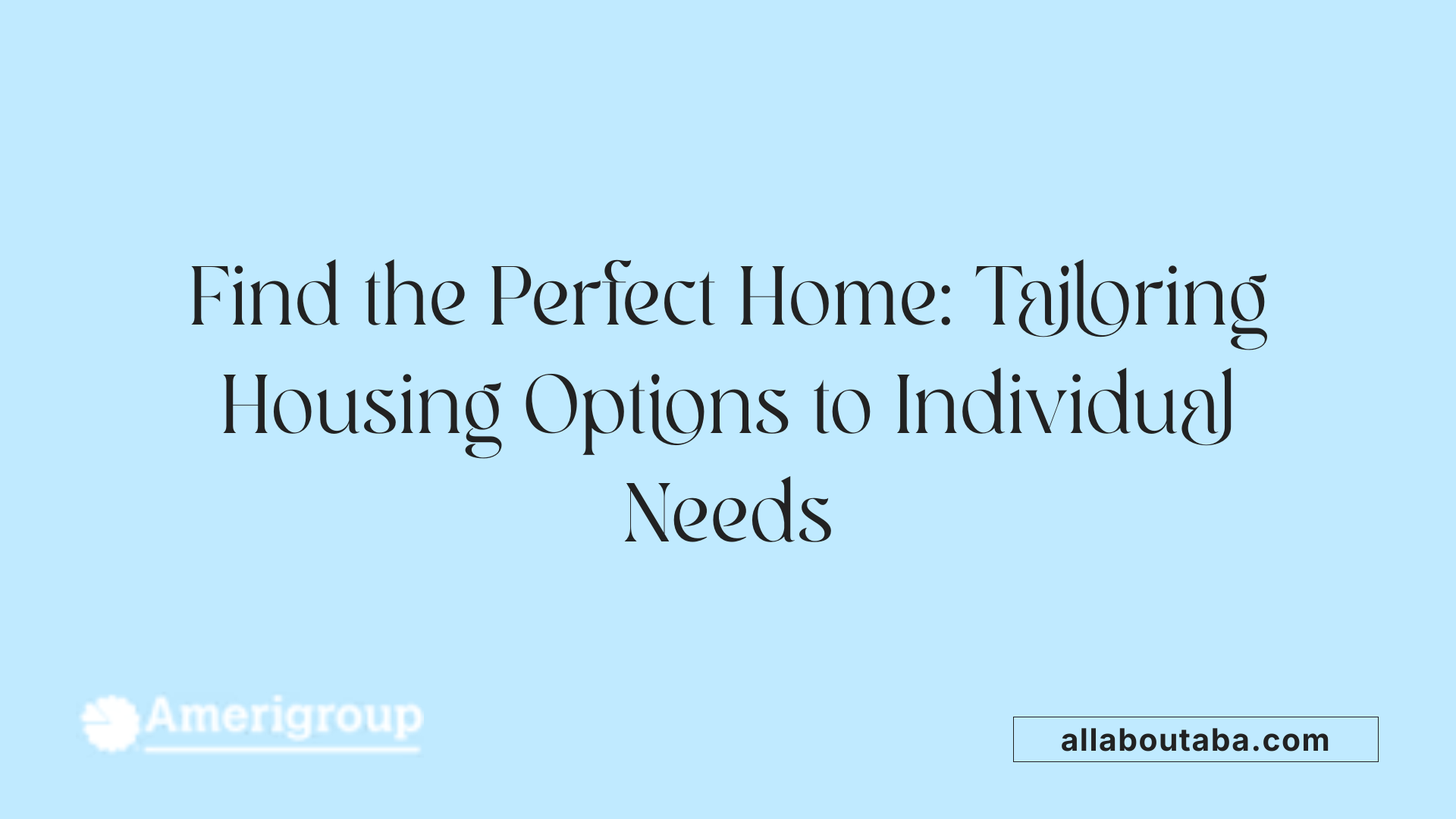Understanding Housing Options for Autistic Adults
As the population of autistic adults grows, so does the need for diverse, accessible, and supportive housing options. These environments are crucial in promoting independence, community involvement, and overall well-being. This article explores the various types of housing available, key considerations in choosing the right environment, funding options, and resources for families and individuals seeking suitable residential arrangements.
Common Types of Supportive Housing for Autistic Adults
 Supportive housing options for autistic adults cover a broad spectrum that aims to enhance independence, social integration, and access to support services.
Supportive housing options for autistic adults cover a broad spectrum that aims to enhance independence, social integration, and access to support services.
One common model is shared living arrangements, where individuals reside in a community setting with support staff or family members. These settings provide assistance with daily routines, social skills, and medical needs, fostering a family-like environment.
Independent living is another option, suited for adults who have developed essential life skills. In these environments, residents manage their own households, with occasional support for more complex tasks like budgeting, grocery shopping, or healthcare management.
Supervised group homes serve multiple residents with disabilities, offering round-the-clock staffing for personalized assistance. These homes are often licensed and monitored to ensure safety and quality of life, providing a middle ground between full independence and institutional care.
Supervised apartments are smaller-scale setups where adults live alone or with minimal housemates, with regular visits from support professionals to help with daily activities, community participation, and medical management.
Additionally, Community-Integrated Living Arrangements (CILAs) promote community involvement by placing individuals in apartments or homes within neighborhoods, supported by local agencies to facilitate social and employment opportunities.
Transitional facilities serve as stepping stones for adults moving from family support or institutional care towards full independence, offering structured support and skills development.
Multi-family housing units usually consist of small, self-contained apartments or homes within a larger community, often with shared resources and communal spaces that encourage social interaction.
These housing types are supported by various programs and nonprofit organizations dedicated to creating accessible, safe, and nurturing environments. The choice among these options depends on individual needs, including support level, medical requirements, and personal preferences.
Ultimately, the goal of these diverse housing models is to help autistic adults thrive within their communities while maintaining as much independence as possible.
Financial Considerations and Cost Expectations

How much does supported housing for autistic adults typically cost?
The expenses associated with supported housing for autistic adults can vary significantly based on location, level of support needed, and the type of housing chosen. On average, the annual cost ranges from approximately $65,000 to $140,000. Higher-end figures reflect facilities with more intensive support services and specialized care.
What are the monthly expenses for group homes and assisted living?
Group homes, which house multiple residents with varying support needs, generally charge between $2,000 and $6,000 per month. Costs might be higher depending on the staffing levels, customizations, and additional services such as medical support or behavioral interventions.
Assisted living communities, offering semi-independent living with caregiver support, typically have monthly fees around $3,750. These include accommodation, meals, and personal care assistance. Costs can escalate if additional therapies, specialized medical care, or private accommodations are required.
How does Medicaid coverage assist with housing support?
Medicaid plays a significant role in offsetting housing costs for eligible individuals. It can cover a broad spectrum of services provided within both institutional settings and community-based housing options. For many families, Medicaid's support makes the difference in accessing higher-quality, supportive residences without solely relying on private funds.
What are private pay options?
Families and individuals who do not qualify for or prefer not to use Medicaid primarily rely on private funding sources. These include personal savings, family support, and private insurance, which may cover some aspects of supported housing. Private pay arrangements often require careful financial planning, considering the ongoing expenses of supportive living environments.
| Cost Type | Estimated Range (Annual) | Typical Monthly Cost | Notes |
|---|---|---|---|
| Supported Housing | $65,000 - $140,000 | $2,000 - $6,000 | Varies based on location and services |
| Assisted Living | N/A | ~$3,750 | Usually includes basic support and housing |
| Medicaid Coverage | Covered partially or fully | Varies | Depending on eligibility and services provided |
Understanding these financial considerations helps families plan effectively for the future, ensuring that autistic adults can access safe, affordable, and supportive living arrangements tailored to their needs.
Funding and Policy Resources for Housing Support

Does Medicaid cover housing options like group homes for autistic adults?
Yes, Medicaid plays a significant role in funding housing options for autistic adults, including group homes and supported living arrangements. Through various federal and state programs, Medicaid offers Home and Community-Based Services (HCBS) waivers that support community living. These waivers—such as the Supports Waiver and Residential Options Waiver—provide funding for services that facilitate safe, sustainable housing environments, including assistance with daily living skills, environmental modifications, and supportive supervision.
Supported housing initiatives like the Section 811 Supportive Housing program, administered by the Department of Housing and Urban Development (HUD), also help low-income individuals with disabilities access affordable, accessible housing options. This includes developments specifically designed for adults with autism and other intellectual or developmental disabilities.
In addition, programs like Housing Choice Vouchers and various rental assistance schemes aim to reduce financial barriers. These programs provide subsidies that enable eligible individuals to rent suitable accommodations, fostering independence and community integration.
Organizations such as the Autism Housing Network and the Madison House Autism Foundation serve as valuable resources. They offer guidance and information about available housing options, funding programs, and how families and individuals can navigate the complex funding landscape.
To access these supports, families and individuals should work closely with their state Medicaid agencies and local housing authorities. Together, they can explore eligible services, understand application processes, and develop strategies to secure stable and supportive housing arrangements tailored to their needs.
More information search query
Searching for "Medicaid coverage for autism supported housing" can provide additional insights into available services, state-specific programs, and recent policy updates, helping families make informed decisions about housing support options.
Choosing the Right Housing Environment for an Autistic Adult
 When selecting housing for an autistic adult, it's crucial to assess their unique needs and preferences. This involves considering their support requirements, independence level, and safety concerns to find an environment that promotes comfort and well-being.
When selecting housing for an autistic adult, it's crucial to assess their unique needs and preferences. This involves considering their support requirements, independence level, and safety concerns to find an environment that promotes comfort and well-being.
Support levels and environment type vary widely. Options can include independent apartments, shared living arrangements, group homes, or assisted living. Each setting provides different levels of supervision and assistance, matching support to individual needs while encouraging autonomy.
Neighborhood characteristics play an important role. Access to public transportation, proximity to community services, and neighborhood safety can significantly impact quality of life. Living in an accessible, inclusive community fosters social engagement and reduces feelings of loneliness.
Ensuring the individual is involved in the decision-making process is vital. Early planning, including assessments of strengths, needs, and personal preferences, helps identify the most suitable housing options. Exploring available resources such as Medicaid, housing vouchers, and community-based programs can make housing more affordable and accessible.
Ultimately, choosing the right home for an autistic adult depends on a comprehensive evaluation of support needs, environment suitability, and personal choice. Engaging the individual in planning respects their independence and rights, supporting a transition that enhances their quality of life.
The Impact of Supported Housing on Autistic Adults’ Well-Being

How can supported housing improve the quality of life for autistic adults?
Supported housing plays a vital role in enhancing the lives of autistic adults by providing a secure and supportive environment that fosters independence. It offers personalized assistance with daily activities like cooking, cleaning, budgeting, and self-care, empowering residents to manage their daily lives more confidently.
Beyond practical support, these housing options promote personal growth by encouraging skill development and self-reliance. This helps adults feel more autonomous and capable, which boosts their self-esteem and life satisfaction.
Community interaction is a cornerstone of supported housing. By living in shared environments or communal settings, autistic adults can build relationships, participate in social activities, and feel connected. This reduces feelings of loneliness and social isolation, which are common challenges.
Support services are tailored to meet individual needs, with staff available around the clock in many settings. This ensures that medical, emotional, and safety concerns are addressed promptly, providing peace of mind for residents and their families.
Overall, supported housing improves quality of life by creating a nurturing environment that combines safety, independence, community, and access to specialized resources. This integrated approach enables autistic adults to thrive, fostering a sense of belonging and purpose.
Building a More Inclusive Community
Supporting autistic adults in finding appropriate, accessible, and supportive housing is vital for fostering independence, reducing loneliness, and enhancing their quality of life. Through a combination of diverse housing models, adequate funding, and community engagement, society can create inclusive environments where autistic adults thrive. Continued advocacy, policy reform, and resource development are essential to address the current shortages and barriers, ensuring that every individual has the opportunity to live in a safe, supportive, and fulfilling environment.
References
- Housing and community living | Autism Speaks
- Housing | Autism Society
- Autism Housing Network - Home
- [PDF] Residential Options - Autism Society of North Carolina
- Pennsylvania Group Homes for Adults With Disabilities & Autism
- Residential Services for individuals with autism - Avondale House
- Homes for Autistic Adults: What are the Options?
- Autism Group Home & Services in Maryland - Bello Machre







